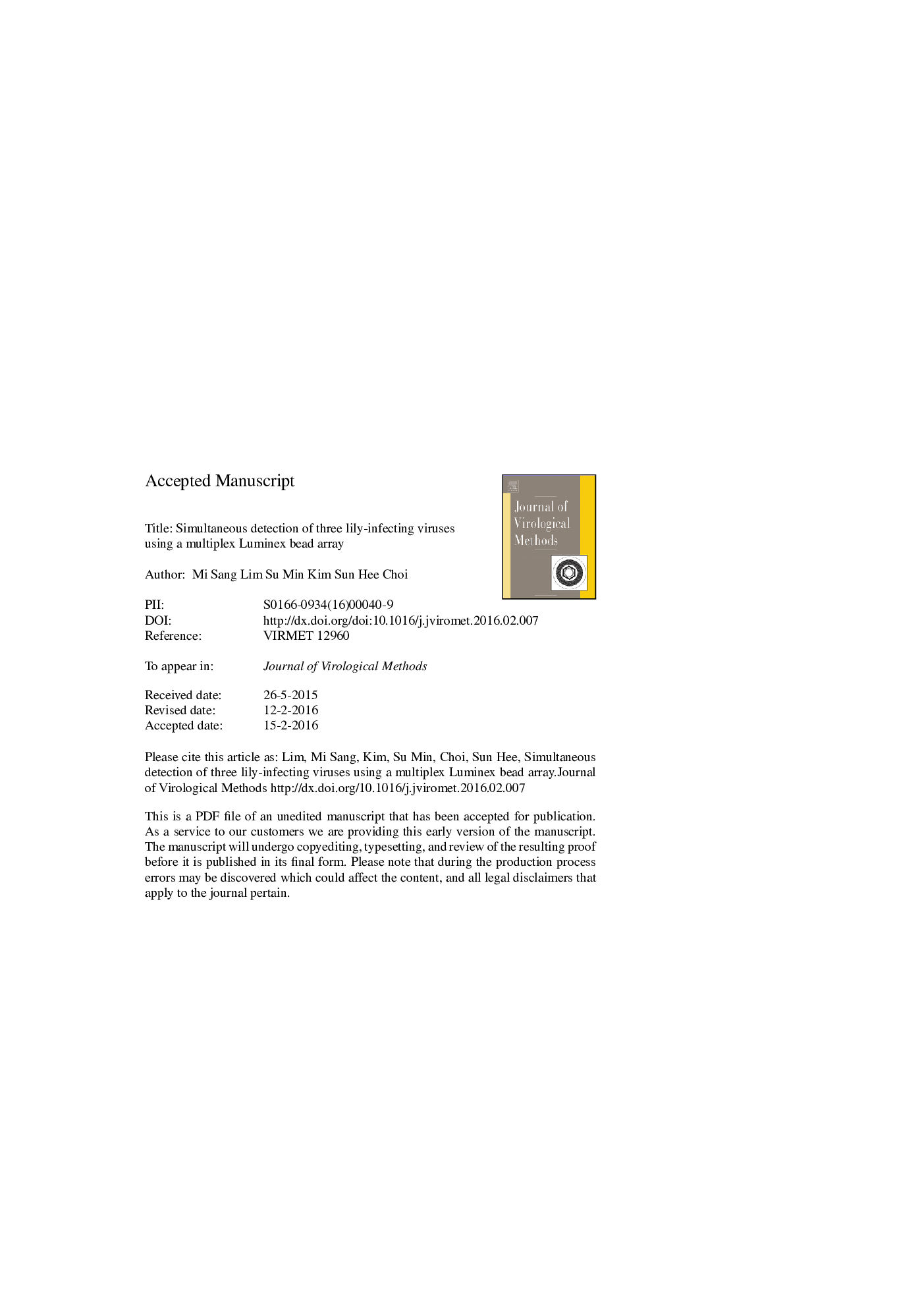| Article ID | Journal | Published Year | Pages | File Type |
|---|---|---|---|---|
| 6132941 | Journal of Virological Methods | 2016 | 14 Pages |
Abstract
A Luminex bead array was applied to detect multiple-virus coinfection in lily plants exhibiting typical symptoms, and the efficiency of this detection system was assessed. Specific primer sets for the simultaneous detection of 4 targets in virus-infected lily plants were constructed and used for reverse transcription (RT)-polymerase chain reaction (PCR), and specific probes were used for Luminex-based assay. Each of the 4 targets was amplified, and the amplicons were used for Luminex bead array experiments. A Luminex bead array analysis of lily-infecting viruses was performed using the quadruplex RT-PCR products followed by hybridization between the biotinylated targets and anti-tagged microsphere beads. The hybridization products produced fluorescence signals that were detected by the Luminex system. Signal strengths were analyzed by their median fluorescence intensity (MFI) values. Detection of the different target elements was found to be very specific to the corresponding viruses in lilies, and coinfection with multiple viruses was specifically detected via the MFI signals. Therefore, the use of a Luminex bead array for the detection of co-infected multiple viruses in lily plants can be an improved system for screening and analyzing multiple-virus infection.
Keywords
Related Topics
Life Sciences
Immunology and Microbiology
Virology
Authors
Mi Sang Lim, Su Min Kim, Sun Hee Choi,
